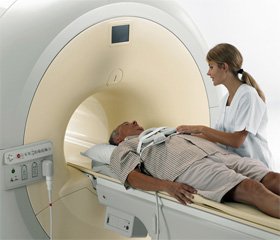Журнал «Здоровье ребенка» 7 (50) 2013
Вернуться к номеру
The description of the case of "double crust" syndrome
Авторы: Sadekov I.A., Termenzhi T.V., Sadekova I.V., Petrenko L.V., Tishkovets O.I. - Children''s Clinical Territorial Medical Association; Ltd. "The medical radiology" Makeyevka (Ukraine)
Рубрики: Педиатрия/Неонатология
Версия для печати
Syndrome "double crust" is a rare, genetically caused anomaly of the central nervous system. Its appearance is due to the mutation of dablkortina Xg that is localized in chromosome 22, which leads to the formation of laminar flow (the tape) heterotopia subcortical neurons. As the result of such violation of migration the illusion of overlapping bark - "dual core" (1,2,3,4,5) is created. The psychomotor retardation and the treatment-resistant epilepsy dominate in the clinical picture. The given report presents a case that meets the basic diagnostic criteria for the syndrome of "double crust".
Patient D, born 30.06.1995. Personal history: a child of 4 pregnancies, 1 - spontaneous abortion in the early stages, 2-birth (healthy daughter, 20 years old), 3 - medical abortion, pregnancy was a real threat of interruption in the early stages, childbirth 2, term, physiological, weight 3200.0, Apgar score 8 - 8 points. Early motor and speech development with a certain tempo delay. At 4 years of age there were bouts of "stop" view with a sinking serial, then with the addition of the focal component of tonic eye deviation to the left, and tonic-clonic jerks in the left hand, then joined secondary generalized paroxysms. The therapy was conducted with phenobarbital and, depakine. At the age of 10 atonic, then automotoric attacks appeared, lamiktal was added to the therapy. The increase in movement disorders with the formation of tetraparesis and cognitive impairment was marked. At the time of admission to the neurological department (16.10.2012 g), the patient had been remained bouts of loss of consciousness with a fall without convulsions, seizures, myoclonic jerks of the head, with its crowding, lasting from 3 to 5 minutes, seizures, "softling" with the folding of the body forward. The frequency of paroxysms was 8 per day. Besides there were complaints of excess body weight, strabismus, reducing of intelligence.
Objectively on admission: the state of the main disease was severe in neurological status: eye slits D more than C, the pupils are equal, vertical strabismus left, flattened right noselabial fold, deviation of the tongue and uvula to the left, the muscle tone in the limbs is distonic, movements in the limbs are limited, muscle strength is reduced in proximal limbs, tendon reflexes are equally animated, equal feet pathological signs on 2 sides, in a sample of Romberg they are bent backward and sideways. Finger-nose test is performed with by hit. Excess body weight. Vocabulary, intelligence are reduced.
Results of the survey:
EEG monitoring for 24 hours (electroencephalograph machine registrar «Entsefalan-EEGr-19/86 'production of physician-MTD" Taganrog, Russia) during wakefulness and sleep overnight in the frontal derivations the epileptiform activity was recorded in the form of complexes "sharp slow-wave" with a tendency to generalization.
Magnetic rezonans tomography of the brain (the device Hitachi Airis Mate 0,2 Tesla) on axial sections defined bilateral band-shaped zones corresponding gray matter of the brain, located mainly subcortical. Bends of heterotops layers repeat folding of the main cortical surface. Coronary sections confirmed the location of subcortical hetero-tops zones. Visual of dysplastic changes are not determined in the cortex. Conclusion: MR signs of bilateral laminar hetero-top of gray matter - the syndrome of "double cortex".
Thus, a patient with early debut epiparoxysm with specific dynamics and layering paroxysms has: focal - secondary generalization - atonic - automotornic paroxysms, increasing cognitive and neurological deficits. For the diagnosis the conclusion of magnetic rezonans tomography played a decisive role. The diagnosis: The anomaly of the central nervous system: bilateral laminar hetero-top gray matter of the brain - the syndrome of "double crust". Epileptic Encephalopathy Lennox - Gastaut syndrome. Antiepileptic therapy modified: Keppra 2000 mg per day and lamiktal 200 mg per day. Catamnesis for 6 months showed the relief of atonic seizures, but the preservation of focal and automotornic. The patient was offered genetic research at the Institute of Medical Genetics, neurosurgical correction in the Burdenko Institute of Neurosurgery (Moscow).
This case emphasizes that the practice of an internist in epilepsy requires follow a set of obligate principles, which became routine in epilepsy centers. Correct syndromic diagnosis of paroxysms, prolonged video-electroencephalographic monitoring, magnetic resonance tomography wiith high solubility by scanning protocol epilepsy, genetic typing allow timely and accurately diagnose the pathology.

